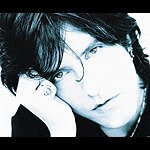(or 10 Reasons Why Your Fan Page is Hurting Your Artistic Career)
1) Ego - Smoothie: Although your fragile artist ego might not be prepared for what I’m about to tell you, the fact is you just aren’t famous enough to have a fan page. Fan pages, like fan sites are set up by fans. With an artist like my favorite author Chuck Palahniuk (creator of Fight Club), his fans actually run his site. Fan pages are for fanatics, hence the root of the word “fan,” as in “fan the flames” of your platform. You can’t fan the flames yourself. Only your fans can fan those flames. If you try to fan those flames, it’s like trying to massage your own back.
2) Content Boredom. If you have a fan page your breaking one of the most important rules of web content. That being, you shouldn’t repeat it. Don’t repeat it. Don’t repeat it. Don’t repeat it. Do you really have enough unique content to divide it between 2 Facebook locations? Not. Oh, I know, your fans are on one, but aren’t most of them on the other too? Not really? So, you’re telling me only your family and friends on your regular page and only your fans on your fan page? This philosophy is akin to opening an envelope, reading a letter, sticking the letter back in the envelope and taking it back out and reading it again. Can you say content boredom?
3) It’s Bizness Baby: Facebook continues to work well for individuals because it is for individuals – not businesses. This is why businesses get shut out on Facebook. You don’t see Coca-Cola with a huge Facebook presence for a reason. Sure, they have 3 million fans on their fan page, (but that’s because this ties into rule number 1 above) - you don’t see them with an individual profile page. Even when businesses try to bridge the intimacy gap by appearing to be an individual, most Facebookers can see right through it. Remember, Facebook was originally started so college students could connect with one another. Sure, there are all kinds of wing-nuts out there that will tell you how to cash in on the social media scene, but the fact is when you create a Fan page, you are saying that you are a business and Facebookers just don’t dig businesses.
4) Dilution is No Solution: Each month the amount of information that Facebookers must sift through doubles. For an individual Fan page it’s becoming like a combination of a genetically altered personal website and Google. Although this may scare you, it also feels a lot like what My Space went through before it became the seedy section of Vegas On-line. As such, Facebook becomes less and less user-friendly. I personally find it hard to sift through a fan page and find, view or listen to samples of an artists work, check out tour dates on a calendar, etc. And so, thanks to Facebook, good, user-friendly artist websites are making a comeback.
5) Because Everyone Else if Doing it: Listen, I know why you have a fan page. Because some artist you know started one and you think you need to have one too. You’re just getting in your own way as an artist. In what other ways are you getting in your own way as an artist? My guess is this is just the tip of the iceberg.
6) Mass Confusion: Most friends will join your fan page out of obligation. Fan rather than offend – that is the golden rule here. Besides most Facebookers (count yourself as one of these people) really don’t understand the difference between becoming your fan and becoming your friend. So, you’re just perpetuating the idea of mass confusion.
 7) Once removed, once looked over: If I’m your friend you can ask me for anything… well, almost anything. If I’m your fan – not so much. By taking friends and making them fans you’re cheapening your relationship with them. When you make a call to action, most times you’re going to get a response of 3% or less. For instance, if you ask 100 fans to come to your next show, 3 or fewer might. With friends the rate increases dramatically. From experience, I’ve seen this rate jump to as high as 25% with relationships that are nurtured constantly. Do you plan to nurture this “fan” relationship on your fan page? Not.
7) Once removed, once looked over: If I’m your friend you can ask me for anything… well, almost anything. If I’m your fan – not so much. By taking friends and making them fans you’re cheapening your relationship with them. When you make a call to action, most times you’re going to get a response of 3% or less. For instance, if you ask 100 fans to come to your next show, 3 or fewer might. With friends the rate increases dramatically. From experience, I’ve seen this rate jump to as high as 25% with relationships that are nurtured constantly. Do you plan to nurture this “fan” relationship on your fan page? Not.8) Decaffeinated Procrastination! How much of what you do on Facebook is procrastination? You know you blow hours of your life on there. Do you really need to have a task like updating a Fan page on your to-do list? Remember, it’s not how many people you know in the end, it’s about how many people you knew who knew other people. In terms of networking, you should be nurturing the relationships amongst your FB friends rather than worrying about how to give your fans a decaf version of your life.
9) Community Disability: Every time you do something on Facebook with your fans you should think of it as a notch. Some notches are cut deep and some are cut shallow. What’s important to know is that after a while your fans and friends will become numb to these notches. Fans want to feel like they belong to something and to be honest being a fan to your fan page (which isn’t set up to foster community) doesn’t provide this. After a while your fan page is more blah, blah, blah.
10) Jellyroll: If you can’t find a good enough reason in this list to kill your fan page right now, then jellyroll. That’s right jellyroll! Jellyroll is THE universal reason and if Jellyroll isn’t good enough, then jellyroll on you.






























